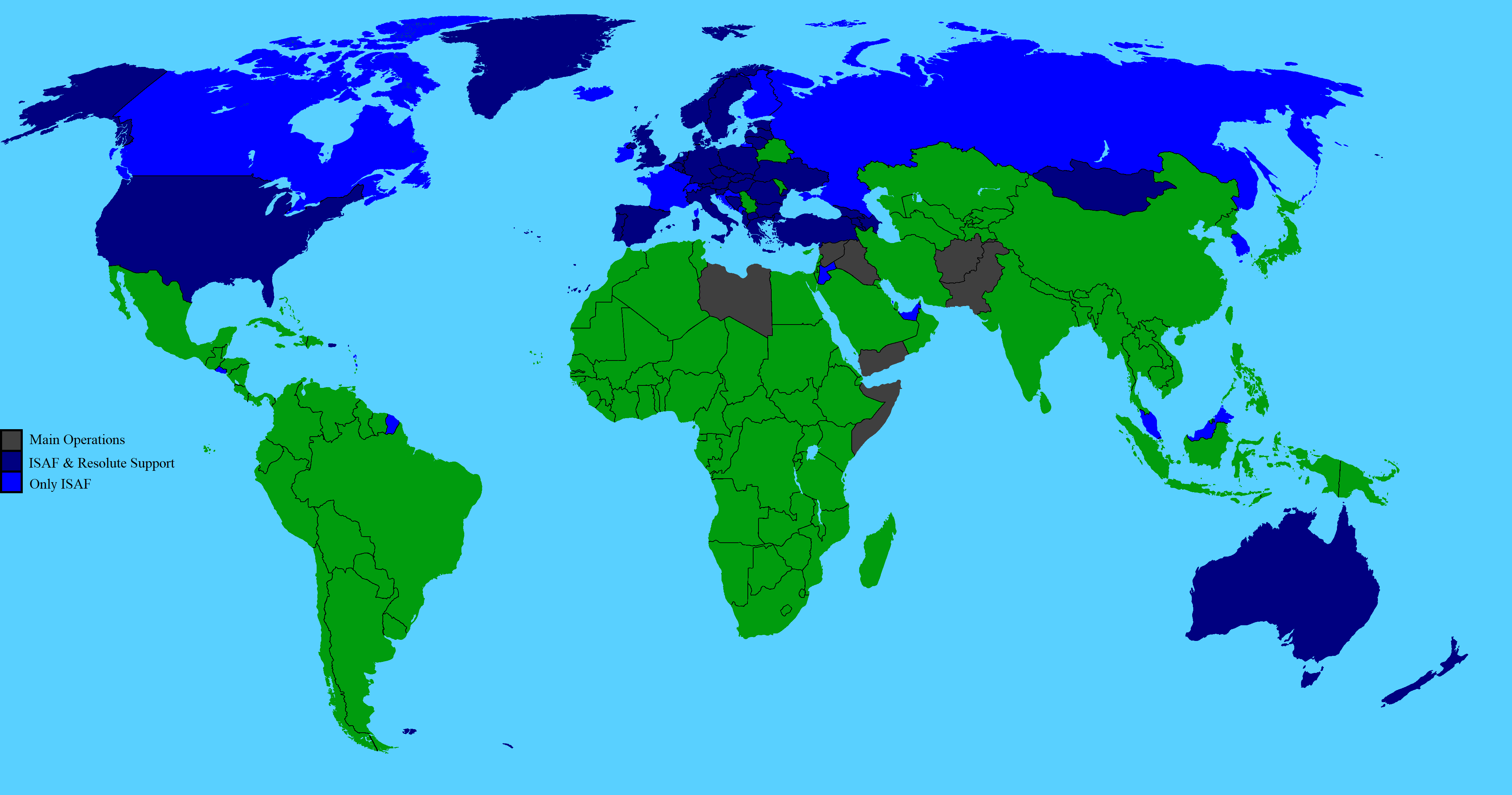World Map of War on Terror Events in Afghanistan


Marcus Rodriguez
Historical Geography Expert
Marcus Rodriguez specializes in historical cartography and geographic data analysis. With a background in both history and geography, he brings unique...
Geographic Analysis
What This Map Shows
The "World Map during the events of War on Terror (c. 2021)" provides a detailed geographical context of the significant military and political developments that transpired in Afghanistan and surrounding regions during the War on Terror, which officially began in 2001. This visualization highlights key areas of conflict, the presence of military bases, and the geopolitical implications that arose from the U.S. and allied interventions. As we delve into this map, we can better understand the profound shifts in power dynamics and the lasting impact on Afghanistan and its neighbors well into 2021.
Deep Dive into Afghanistan's Geopolitical Landscape
Afghanistan, a landlocked nation in South Asia, has long been a focal point for geopolitical tensions. The War on Terror fundamentally altered the landscape of Afghanistan, with the U.S. military presence peaking in the early 2010s. Interestingly, Afghanistan's rugged terrain and strategic location—bordering Pakistan, Iran, Turkmenistan, Uzbekistan, Tajikistan, and China—have made it a pivotal player in regional politics.
What's fascinating is that Afghanistan has been influenced by numerous empires throughout history, from the Persians to the British, and later the Soviets. However, after the events of 9/11, the country was thrust into a new era of international attention. The map illustrates various military bases established by NATO forces, particularly in provinces such as Helmand and Kandahar, which became infamous for heavy fighting and insurgency.
In the years leading up to 2021, the Taliban’s resurgence led to significant territorial gains, which this map captures through the areas under their control. By 2021, reports indicated that the Taliban had regained control over approximately two-thirds of Afghanistan, a stark contrast to the early 2000s when they were ousted from power. The visual representation of these changing boundaries provides a stark reminder of the shifting power dynamics within the country.
Moreover, the cultural and ethnic diversity of Afghanistan adds another layer of complexity. The map hints at various ethnic groups, such as Pashtuns, Tajiks, Hazaras, and Uzbeks, whose historical grievances and alliances have played crucial roles in the ongoing conflict. The interplay of these ethnic groups often leads to localized conflicts, which can be observed in the variations in control and influence across different regions.
Regional Analysis
Looking at the broader geographic context, the map highlights significant regional differences in the impact of the War on Terror. For instance, the southern provinces, like Helmand and Kandahar, were hotspots of military engagement and Taliban influence. In contrast, the northern regions, which were traditionally strongerholds of the Northern Alliance, were relatively stable, albeit not without their own challenges, including ethnic tensions and corruption.
Interestingly, Kabul, the capital, has been a symbol of the struggle for stability. Despite being the center of international attention and aid, Kabul's security situation remained precarious, influenced by the shifting control of surrounding provinces. The map reveals that while Kabul experienced some urban development and reconstruction efforts, many rural areas remained mired in poverty and insecurity, further complicating the nation’s recovery.
Comparing Afghanistan to its neighbors, the geopolitical implications are profound. Pakistan, for instance, played a crucial role in the conflict, often providing sanctuary for Taliban factions. The map indicates the porous nature of the Afghanistan-Pakistan border, which has historically been a conduit for insurgent movements. Meanwhile, Iran has also had its interests in Afghanistan, particularly in countering Sunni extremism and maintaining influence in the region.
Significance and Impact
Understanding the geopolitical landscape of Afghanistan during the War on Terror is essential for grasping the complexities of contemporary international relations. The map serves not only as a historical record but also as a reflection of ongoing challenges, such as regional stability, humanitarian crises, and the resurgence of extremist groups.
In recent years, as the U.S. and NATO forces began to withdraw, the implications of the Taliban's return to power have raised questions about the future of Afghanistan and the broader region. Will the geopolitical balance shift once again? How will neighboring countries react to a Taliban-led government? These are pressing questions that continue to shape policy discussions.
In conclusion, this map provides a vital lens through which we can examine the intricate web of influences and conflicts that have defined Afghanistan during the War on Terror. Its legacy will undoubtedly continue to evolve, with repercussions felt far beyond its borders. As we look to the future, understanding this historical context remains crucial for any meaningful dialogue about peace and stability in the region.
Visualization Details
- Published
- October 1, 2025
- Views
- 44
Comments
Loading comments...